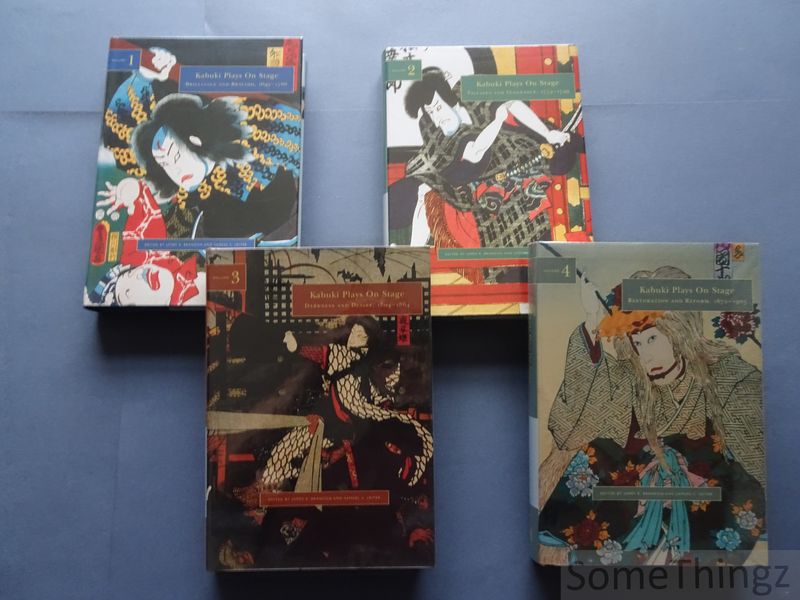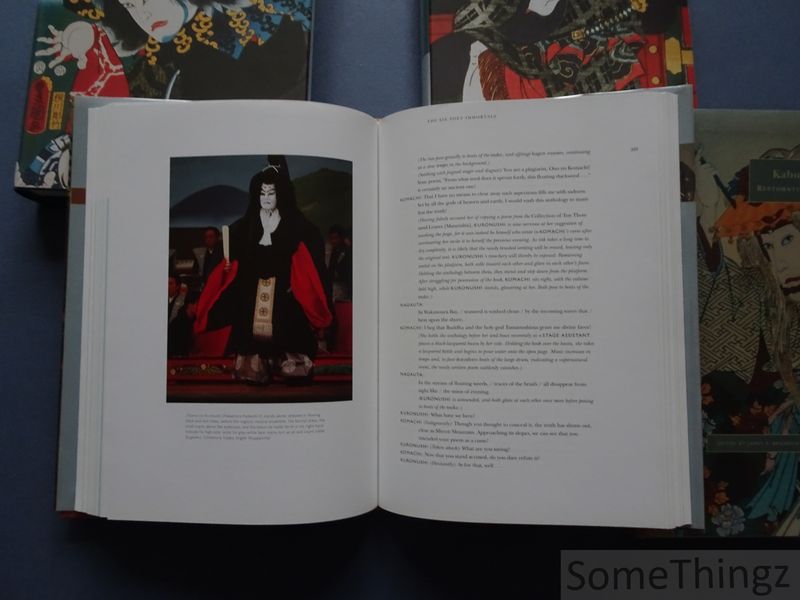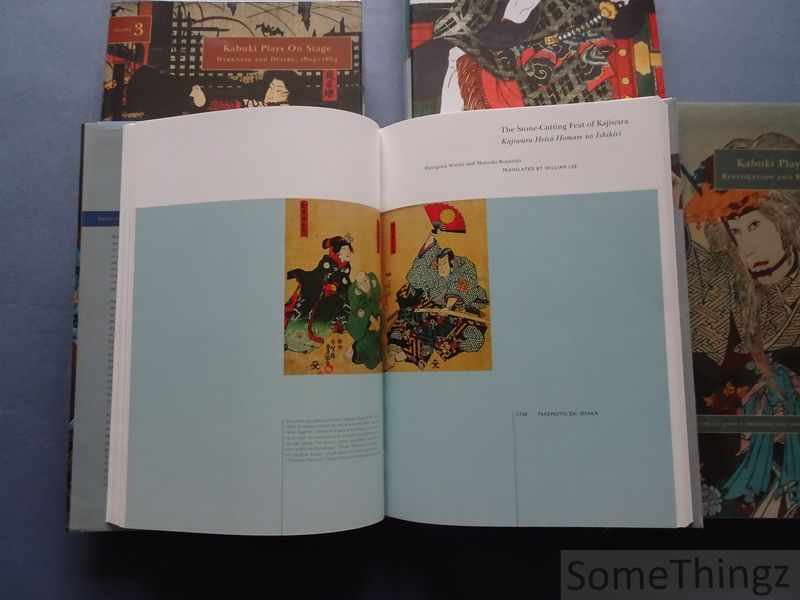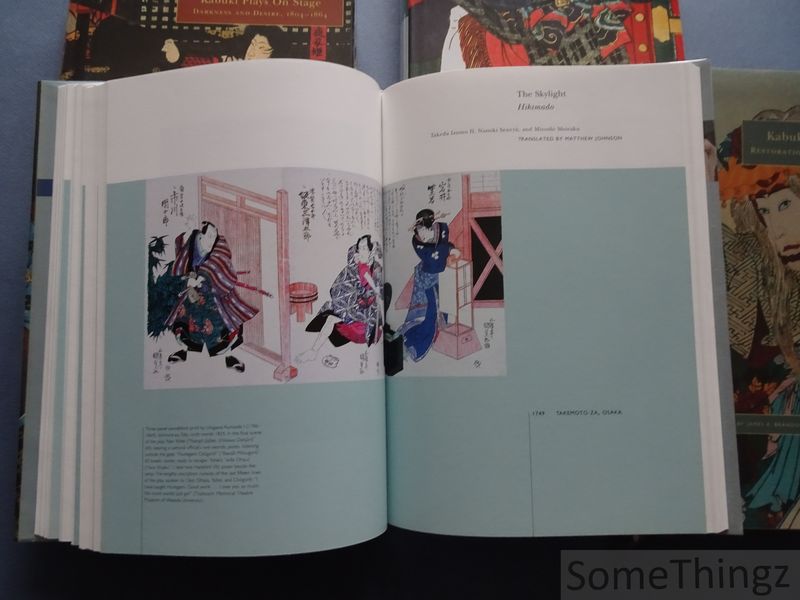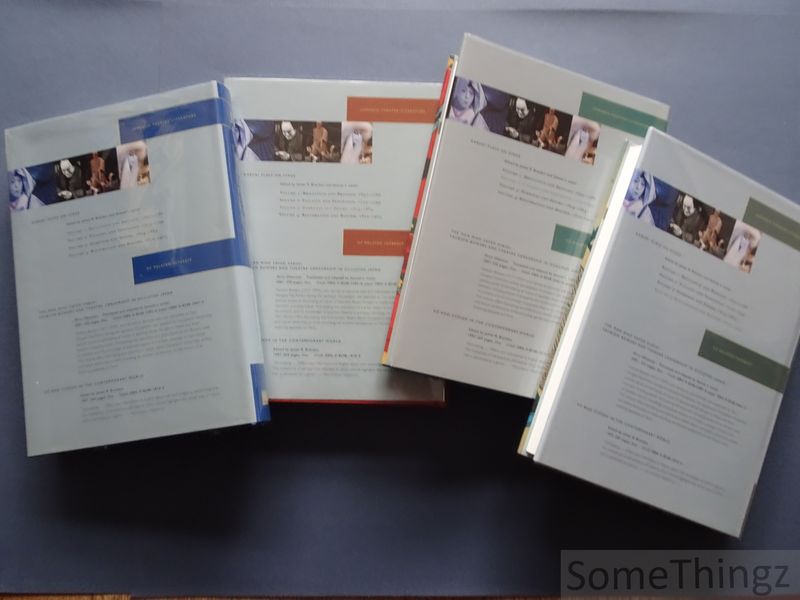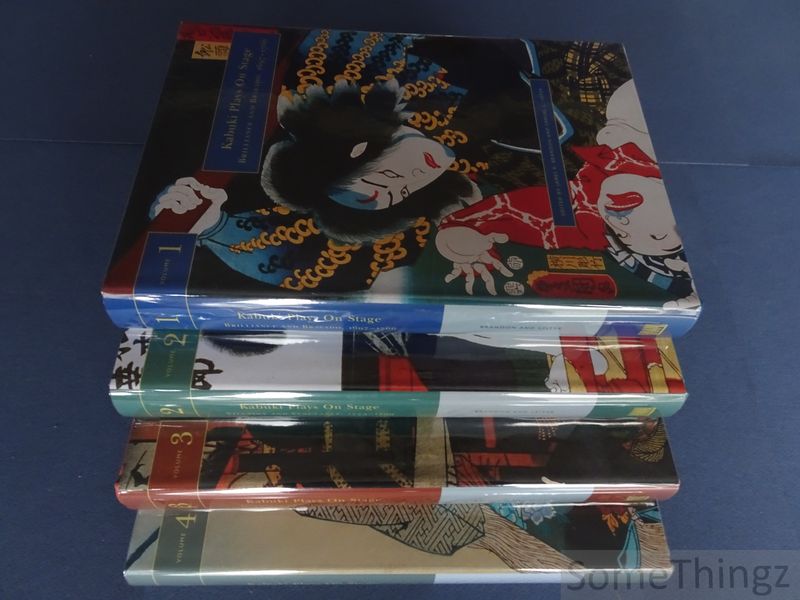BOOKS
James R. Brandon and Samuel L. Leiter (eds.).
Kabuki plays on stage.
Vol. 1: Brilliance and Bravado 1697 1766. Vol. 2: Villainy and Vengeance 1773 1799. Vol. 3: Darkness and Desire 1804 1864. Vol. 4: Restoration and Reform 1872 1905.?
Honolulu, University of Hamwai'i Press, 2002-2003.
Sold
4 volumes, complete, all bound, cloth with orig. dustjackets (protected with removable cellophane), xiii+391, xiii+413, xv+397, xiii+430pp., 18.5x26.5cm., illustr. in col. and b/w., in very good condition. as new. Rare complet set of this work of reference.
Kabuki Plays On Stage represents a monumental achievement in Japanese theatre studies, being the first collection of kabuki play translations to be published in twenty-five years. Fifty-one plays, published in four volumes, vividly trace kabuki's changing relations to Japanese society during the premodern era. Volume 1 consists of thirteen plays that showcase early kabuki's scintillating and boisterous styles of performance and illustrates the contrasting dramatic techniques cultivated by actors in Edo (Tokyo) and Kamigata (Osaka and Kyoto). The twelve plays translated in Volume 2 cover a brief period, but one that saw important developments in kabuki architecture, acting, dance, and the manipulation of characters and themes. Darkness and Desire, 1804-1864, is the third volume in a monumental new series-the first collection of kabuki play translations to be published in nearly a quarter of a century. Fifty-one plays, published in four volumes, vividly trace kabuki's changing relations to Japanese society during the premodern era. The fourteen plays translated in Volume 3, Darkness and Desire, 1804-1864, mark an extreme point in the development of kabuki dramaturgy. The plays are remarkable, even within kabuki, for their intense theatricality, gutsy individualism of character, cold-blooded and ferocious violence, realism pushed into fantasy and grotesquery, novelty for its own sake, sexual aggressiveness, and assertion of female will. The plays depict a society in extremis, the end of an era, a time often marked by unmitigated darkness and desire.Restoration and Reform, 1872-1905, is the fourth and final volume in a monumental new series that traces kabuki's changing relations to Japanese society during the premodern era. The twelve plays translated in Volume 4 cover the remarkable Meiji period, which followed the restoration of the emperor as the leader of Japan. They reflect the years in which reform-minded leaders struggled to help Japan catch up with the West. Dramatists no less than others sought ways in which to bring their traditional art into the modern world and to bring international respectability to the national stage. Included are kabuki dance plays that strive to resemble nô and kyôgen; historical dramas that abandon theatrical fantasy and opt for accurate reproduction of ancient manners; domestic dramas featuring colorful heroes and heroines; pieces that introduce faddish Western properties and behavior; and a play that bridges the gap between the conventions of classical kabuki, Shakespeare, and modern psychological drama. Dominating the era are the works of Kawatake Mokuami, the last great kabuki playwright, while the dramaturgy of literary scholar Tsubouchi Shôyô brings kabuki into the twentieth century.
As the series title indicates, the plays were translated to capture the vivacity of performances on stage. The translations, each accompanied by a thorough introduction that contextualizes the play, are based not only on published texts, but performance scripts and the study of the plays as they are performed in theatres today. Each volume is lavishly illustrated with rare woodblock prints in full color of Tokugawa- and Meiji-period productions as well as color and black-and-white photographs of contemporary performances.

